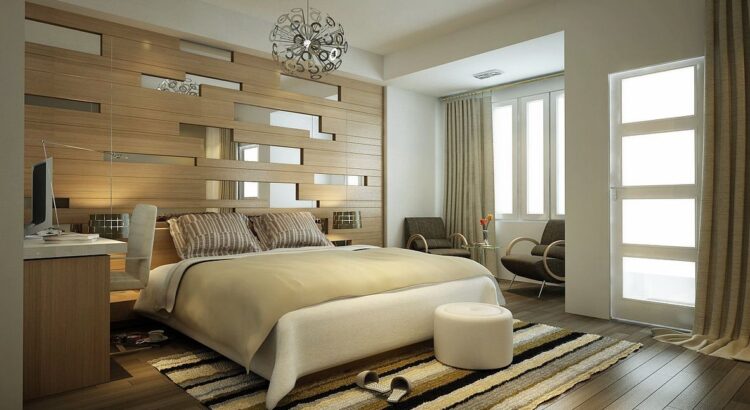Interior design is far more than arranging furniture or selecting paint colors; it is a nuanced art form that shapes the way we experience our surroundings. A well-designed interior speaks to the soul, balancing aesthetics, functionality, and emotional resonance. It transforms ordinary rooms into sanctuaries that reflect identity, evoke comfort, and inspire creativity. To truly appreciate interior design is to recognize it as a thoughtful dialogue between space, light, texture, and human experience.
At its essence, interior design is a synthesis of creativity and practicality. Designers begin by understanding how a space will be used, who will inhabit it, and what atmosphere it should convey. From these considerations, they develop a cohesive plan that integrates architectural features, furnishings, lighting, and color schemes. This deliberate orchestration ensures that each element complements the others, resulting in an environment that is both beautiful and purposeful.
One of the foundational principles of interior design is balance. Visual weight must be distributed evenly to create harmony within a room. This can be achieved through symmetrical arrangements, such as matching chairs flanking a sofa, or asymmetrical compositions that play with contrast and tension. Balance is not about rigidity but rather about creating a pleasing equilibrium that feels natural and inviting. When mastered, it instills a sense of calm and order that quietly supports the inhabitants’ daily rhythms.
Color, perhaps the most immediate aspect of design, wields tremendous power over mood and perception. A palette of soft neutrals can foster tranquility and timelessness, while vibrant hues invigorate and energize. Successful interior designers wield color with intention, often layering shades and textures to add depth and interest. Accent walls, textiles, and accessories become tools to infuse personality without overwhelming the senses. Beyond mere decoration, color becomes a language through which spaces speak to us emotionally.
Lighting is another indispensable element, shaping how spaces are perceived and experienced throughout the day. Natural light, when harnessed skillfully, breathes life into interiors, accentuating textures and highlighting architectural details. Artificial lighting, meanwhile, offers flexibility and drama, creating ambiance and highlighting focal points. Layered lighting schemes—combining ambient, task, and accent lights—ensure that a room adapts gracefully to different functions and moods. Thoughtful lighting design transforms interiors from static settings into dynamic environments.
Texture and materiality introduce a tactile dimension that enriches the visual narrative. A room composed solely of smooth surfaces may feel sterile, while the interplay of fabrics, woods, metals, and glass invites engagement and warmth. Velvet cushions, rough-hewn wooden tables, and sleek metallic fixtures each contribute to a sensory experience that enhances comfort and sophistication. Mixing textures also creates contrast and rhythm, ensuring that spaces remain visually stimulating without becoming chaotic.
Functionality remains paramount throughout the design process. Aesthetics alone cannot compensate for poorly planned layouts or impractical furniture choices. Interior designers carefully consider traffic flow, ergonomics, and storage solutions to maximize efficiency and ease of use. Multifunctional furniture and flexible spaces have grown increasingly important in contemporary living, reflecting changing lifestyles and the demand for adaptability. A well-designed interior supports the way people live, work, and connect, making daily life more seamless and enjoyable.
Personalization breathes authenticity into interior design. While styles and trends offer inspiration, the most compelling interiors tell stories unique to their owners. Incorporating personal artifacts, cherished artworks, and bespoke elements transforms generic spaces into meaningful environments. Designers encourage clients to infuse their homes with memories and values, fostering a sense of belonging and identity. This human dimension elevates design from superficial styling to a profound expression of self.
Sustainability is now a guiding principle in thoughtful interior design. With growing awareness of environmental impact, designers increasingly prioritize eco-friendly materials, energy-efficient lighting, and products crafted with ethical practices. Reclaimed wood, natural fibers, and non-toxic finishes not only reduce ecological footprints but also introduce beauty and character. Sustainable design challenges us to reconsider consumption patterns and embrace longevity, creating interiors that are responsible and enduring.
Another vital aspect is spatial awareness—the ability to understand and optimize the scale and proportion of a room. Oversized furniture can overwhelm small spaces, while undersized pieces may feel insignificant. Designers skillfully balance scale to create comfortable, well-proportioned rooms that feel neither cramped nor empty. This sensitivity to spatial dynamics extends to the arrangement of objects, ensuring that every item has purpose and presence without overcrowding.
The integration of technology offers exciting possibilities in modern interior design. Smart home systems, advanced climate control, and innovative lighting solutions enhance convenience and comfort without compromising aesthetics. Designers now seamlessly incorporate these technologies, often hidden from view, to preserve the integrity of the design while embracing contemporary needs. This synergy between tradition and innovation enriches interiors, making them not only beautiful but intelligent and responsive.
Interior design also plays a critical role in commercial environments, where atmosphere influences productivity, brand identity, and customer experience. From offices to retail stores, hotels to restaurants, thoughtful design fosters engagement and wellbeing. Ergonomic furnishings, inspiring color schemes, and strategic layouts contribute to spaces that motivate and welcome. The psychology of design in commercial settings underscores the discipline’s profound impact beyond residential interiors.
In conclusion, interior design is an intricate craft that combines artistic vision, technical expertise, and emotional insight. It transcends superficial decoration to shape environments that nurture, inspire, and endure. By harmonizing balance, color, lighting, texture, and function, designers create spaces that resonate deeply with those who inhabit them. With a growing emphasis on personalization, sustainability, and technological integration, interior design continues to evolve while honoring timeless principles. Ultimately, it is a celebration of human creativity and the enduring quest to make our surroundings not just livable, but truly extraordinary.





